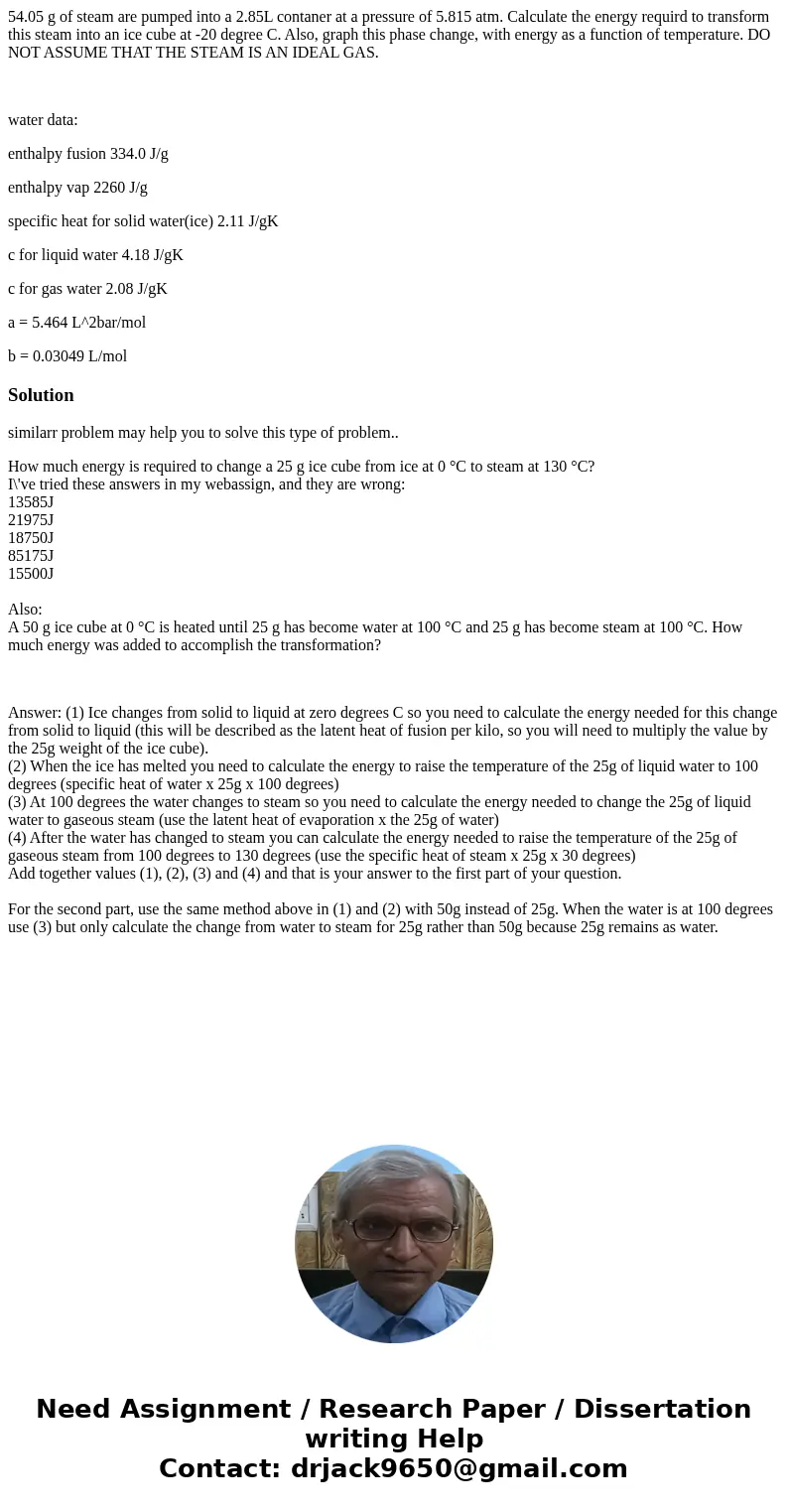5405 g of steam are pumped into a 285L contaner at a pressur
54.05 g of steam are pumped into a 2.85L contaner at a pressure of 5.815 atm. Calculate the energy requird to transform this steam into an ice cube at -20 degree C. Also, graph this phase change, with energy as a function of temperature. DO NOT ASSUME THAT THE STEAM IS AN IDEAL GAS.
water data:
enthalpy fusion 334.0 J/g
enthalpy vap 2260 J/g
specific heat for solid water(ice) 2.11 J/gK
c for liquid water 4.18 J/gK
c for gas water 2.08 J/gK
a = 5.464 L^2bar/mol
b = 0.03049 L/mol
Solution
similarr problem may help you to solve this type of problem..
How much energy is required to change a 25 g ice cube from ice at 0 °C to steam at 130 °C?
I\'ve tried these answers in my webassign, and they are wrong:
13585J
21975J
18750J
85175J
15500J
Also:
A 50 g ice cube at 0 °C is heated until 25 g has become water at 100 °C and 25 g has become steam at 100 °C. How much energy was added to accomplish the transformation?
Answer: (1) Ice changes from solid to liquid at zero degrees C so you need to calculate the energy needed for this change from solid to liquid (this will be described as the latent heat of fusion per kilo, so you will need to multiply the value by the 25g weight of the ice cube).
(2) When the ice has melted you need to calculate the energy to raise the temperature of the 25g of liquid water to 100 degrees (specific heat of water x 25g x 100 degrees)
(3) At 100 degrees the water changes to steam so you need to calculate the energy needed to change the 25g of liquid water to gaseous steam (use the latent heat of evaporation x the 25g of water)
(4) After the water has changed to steam you can calculate the energy needed to raise the temperature of the 25g of gaseous steam from 100 degrees to 130 degrees (use the specific heat of steam x 25g x 30 degrees)
Add together values (1), (2), (3) and (4) and that is your answer to the first part of your question.
For the second part, use the same method above in (1) and (2) with 50g instead of 25g. When the water is at 100 degrees use (3) but only calculate the change from water to steam for 25g rather than 50g because 25g remains as water.

 Homework Sourse
Homework Sourse